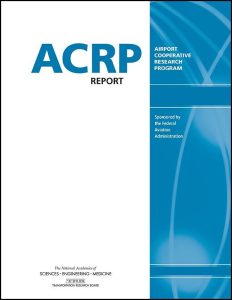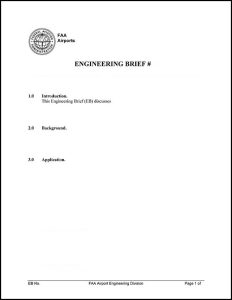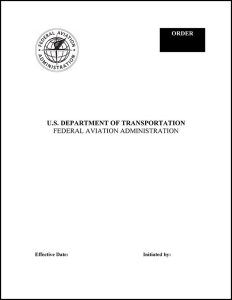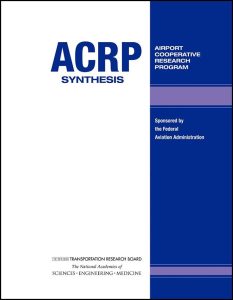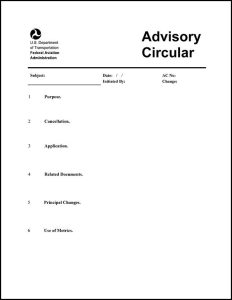To narrow the library of airside resources, use the filter boxes or airport map below or search box above.
Click an item below to expand.
Resources Matching Your Search
2019
ACRP Research Report 195 is designed to assist airport operators in developing and implementing an obstruction management program to protect the airport airspace from encroachment by tall objects. The report will help airport staff develop an obstruction management plan by understanding the regulatory environment, identifying obstructions, and developing a strategy for communication with surrounding communities that will ensure airport involvement in any development issues that could result in an obstruction around the airport. The report is supplemented by ACRP WebResource 7: Best Practices for Airport Obstruction Management Library, which provides reference documents, model documents, and presentation materials for obstruction management outreach. A methodology for creating a composite map of all applicable airspace surfaces as well as examples of interactive airspace composite surface maps for small and large airports are also provided.
2020
Engineering Brief (EB) 100A addresses the FAA's recent completion of a safety risk assessment of the proposed modifications to the instrument departure surface described in FAA Order 8260.3, United States Standard for Terminal Instrument Procedures (TERPS). This EB provides approval for airport operators to implement the new departure surface for locating holding positions on the airfield.
2019
This order provides guidance for all personnel in the approval of facilities for Category (CAT) I runway visual range (RVR) 1800 at runways with reduced lighting, Special Authorization (SA) CAT I, and all CAT II and CAT III.
2015
The purpose of this memo is primarily to remind FAA Office of Airports staff about their responsibilities (as well as the responsibilities of airport sponsors) in establishing and maintaining clear approach and departure surfaces at airports. The approach and departure surfaces required to be maintained are those identified by Advisory Circular (AC) 150/5300-13A, Airport Design and FAA Order 8260.3B, The United States Standard for Terminal Instruments Procedures (TERPS). The focus of this document is on the TERPS 20:1 surface. While Part 77 civil airport imaginary surfaces are important, they are not the surfaces discussed in this document because they do not directly affect procedures.
2014
This order provides guidance to engineering personnel engaged in the siting of Federal Aviation Administration (FAA) instrument landing systems (ILS). Sufficient information, supplemented by relevant drawings, will enable the engineer to select the optimum site, within defined limits, for each of the subsystems that comprise a category I, II, or III ILS.
2017
Engineering Brief (EB) 98 provides information about the interaction of LEDs used in obstruction lighting fixtures with night vision imaging systems (NVIS) onboard rotary and fixed-wing aircraft. In addition, this EB proposes performance specifications for infrared (IR) emitters to be added to or used with LED L-810, L-864, and L-885 obstruction light fixtures to ensure compatibility with night vision goggles (NVGs) with a Class B filter.
2011
Engineering Brief (EB) 64D addresses the FAA research and development project to determine the operational suitability of a system of runway status lights (RWSL) in the National Airspace System (NAS). RWSL is designed as an airport surface safety system to reduce runway incursions.
2018
This order contains criteria and guidance regarding terminal instrument procedures service provided to the United States Army by the FAA. Under National Agreement 127 (NAT-127), the FAA provides worldwide terminal instrument procedures service for the Army.
2011
ACRP Synthesis 28 explores physical, visual, and communications systems interference impacts from energy technologies on airports and aviation safety. The energy technologies are solar photovoltaic panels and farms, concentrating solar power plants, wind turbine generators and farms, and traditional power plants.
1968
This advisory circular (AC) contains a revised FAA policy under which the FAA accepts conditional ownership of equipment and systems from civil aviation interests, without the use of federal funds, and operates, maintains, and provides the logistic support of such equipment. This AC is only applicable to those navigational and air traffic control systems and equipment installed subsequent to the issuance of this AC.
2015
This order prescribes the method by which the actual flight inspection glidepath angle, instrument landing system (ILS) reference datum height (RDH), and ILS-achieved reference datum height (ARDH) are determined.
2019
This order describes how to request an instrument flight procedure (IFP) including original, amendment, cancellation, or suspension and defines the Federal Aviation Administration (FAA) process for coordinating, approving, and prioritizing each request.
